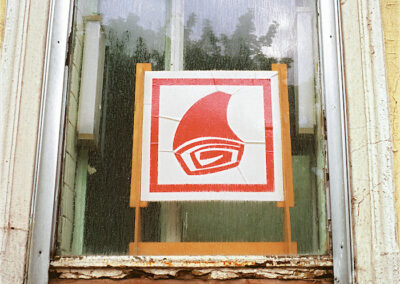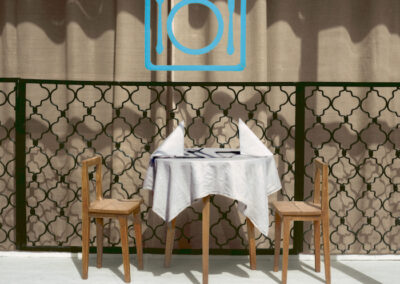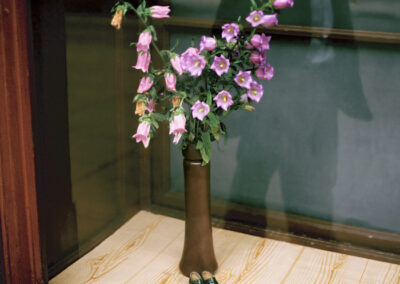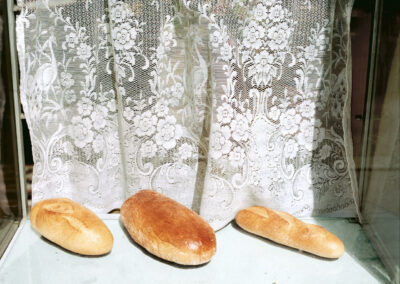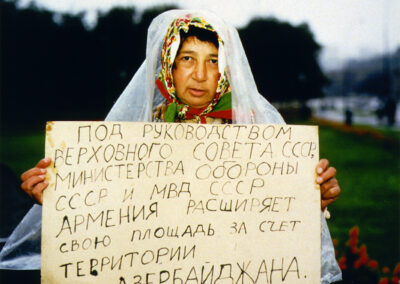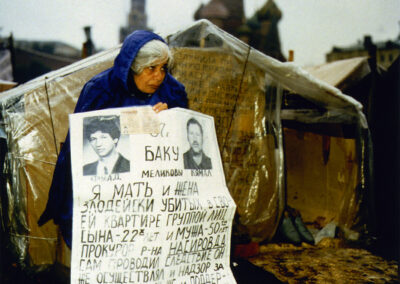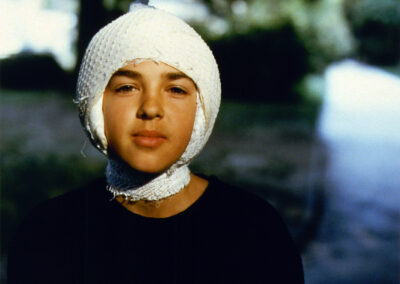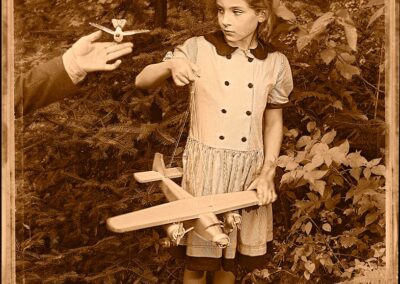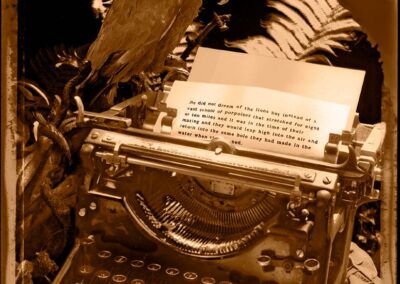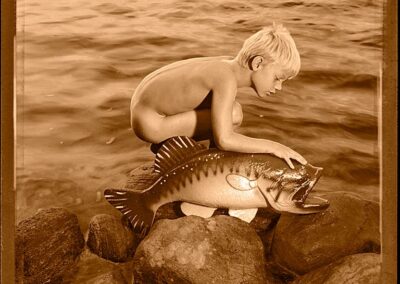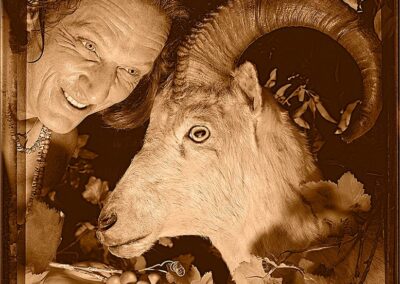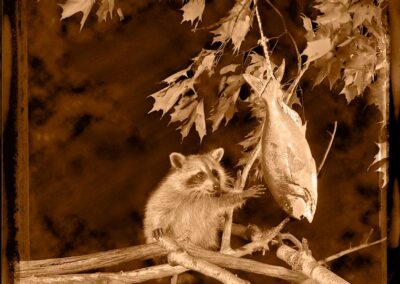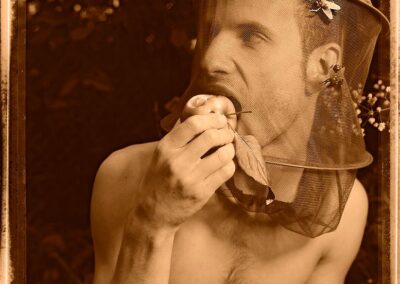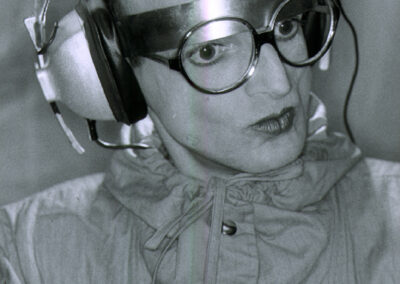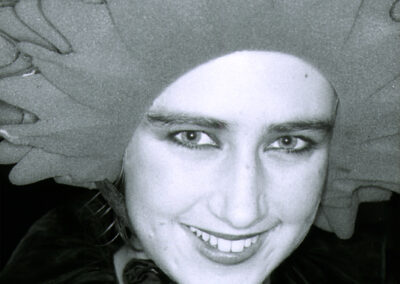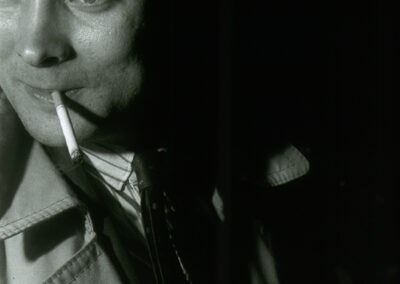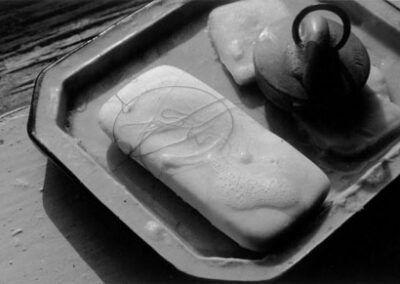Our latest Artist You Need To Know is David Hlynsky. Hlynsky was born in the United States, but emigrated to Canada in 1971. His grandparents had left Poland and the Ukraine around 1912, for North America. He attended Ohio State University from 1965 to 1970, earning a BFA with a major in painting and printmaking.
Hlynsky offers the following about his artwork: Optical accuracy should never be confused with truth. Photographs are always visual opinions. All photographs are made from narrow perspectives seen at privileged moments in time. But inadvertent fragments of the real world always leak into the photograph. These accidental inclusions are captured by the instinctive twitch of my shutter finger. They are the surprises that keep me engaged with my practice. I photograph to watch the duet between a fugative past and timeless present.
David Hlynsky (a third generation Polish-Ukrainian American, which is something to keep in mind with some of his later works about Eastern Europe) arrived in Toronto in 1971 to work as a graphic designer at the Coach House Press. Hlynsky has a multidisciplinary background, worked as a painter, photographer, and holographer.
Much of his photographic work in that decade “was primarily concerned with objects of the everyday, highlighting the banal by the sheer obsession of his careful photographic technique.” Later, in 1974, he would co-found Fringe Research with Michael Snowdon: this was a studio dedicated to the art of holography. In 1977, Hlynksy wrote the following about the emerging technology and his approach to it: “We enjoy the perceptual acrobatics required to distinguish the real from the unreal. Certain kinds of well-made holographs are almost touchably convincing. There is a sense of power in correctly labelling our illusions and a thrilling danger that some day we might forget the distinction.” (from here)
But some of the work for which Hlynsky is best known was photographed between 1986 and 1990 (he made three trips to Eastern Europe) and resulted in a significant and large series of photographs “concerned with the communist regime in Europe and the fall of the Iron Curtain. The 1990 series, Windows through the Curtain, consists of photographs capturing the artist’s reaction to communist Poland and the former Czechoslovakia, where “my most powerful sensation was that these streets were somehow more ‘real’ than I had imagined. East Bloc citizens were largely occupied by the same routines as my neighbours at home: eating, working and maintaining relationships.” In expressing this through his work, which continued to focus on the everyday, Hlynsky affirmed his belief that “the primary contribution of photography to human expression is its relentless capture of inadvertent detail reminding us (often subliminally) that mundane experience is always more complete than our ideological models.” These ideas also helped shaped his 1992 series, Moscow Before the Fall, with a personal yet still very historical documentation of the fall of the Soviet Empire. (from here, including the artist’s own words, from 1990) It’s reasonable to consider that this work is an act of historical and sociological narrative, in terms of Hlynsky’s heritage and his family leaving these same spaces decades earlier.
Hlynsky’s book Window-Shopping Through the Iron Curtain (2015) is reviewed thoughtfully here.
In 1991, Hlynsky began his Naturae Humanae / Wilderness Camp series, which are an amalgamation “of still life constructions and tableaux using textures and forms of the Ontario woodlands, with the application of text, and computer drawings contrasted with hand-drawn images.” He won a commission for a number of photo murals for new Metro Toronto Hall (also in 1991).
Hlynsky has written and published numerous articles (on photographic arts and beyond) and is the former editor of Image Nation magazine. He also has an interest in art in the public sphere, as he “co-curated Toronto’s Rolling Landscape Subway Show (1978), involving the installation of art in subway stations, and has collaborated frequently on theatrical and performance art projects in Toronto.” (from here)
Later, from 1980 – 1984, David became involved with the Toronto Photographer’s Workshop (later to be known as Gallery TPW) and, as President of the Board, assisted the co-operative in opening a permanent gallery at 80 Spadina Ave. This site has become a cornerstone of both the art community in Toronto, and nationally, centred upon photography and other lens based art. Gallery TPW also managed a photo gallery in the hallway at Harbourfront and Hlynsky served on the selection committee or board of directors from the mid 1980’s until 2004.
This is just a brief overview of Hlynksy’s accomplishments, and much more can be seen here, at his site.
David Hlynsky has been in countless exhibitions and publications and given many workshops and lectures, in Canada and internationally. At Ryerson Polytechnical University Hlynsky taught photo theory and technique. Since 1995 he has taught computer imaging and photographic design at Sheridan College and in 2005 he accepted a full time position in the Studio, New Media and Graduate Studies programs at the University of Toronto.
His work is in many public and private collections (including the National Gallery of Canada). Along with having been nominated for a Canadian national magazine Award (for a photo essay in the fall 1990 issue of Canadian Art Magazine), Hlynsky has been awarded grants from both the Canada Council and the Ontario Arts Council.
For the past forty years, I have carried a camera simply for the daily pleasure of remembering a transitory existance through photographs. Inevitably, themes and series have arisen. Some of these were the result of deliberate hunting; others the result of painterly construction. I work in a multitude of modes because the structures of my life change from day to day… travel produces different images than studio practice. Each camera imposes its own stylistic signature. I prefer expressive versatility to the severe quality restrictions dictated by modernist photography.
His site is here, where you can see many more of his photographic series, such as In the beam, New Xanadu and Light and form.

